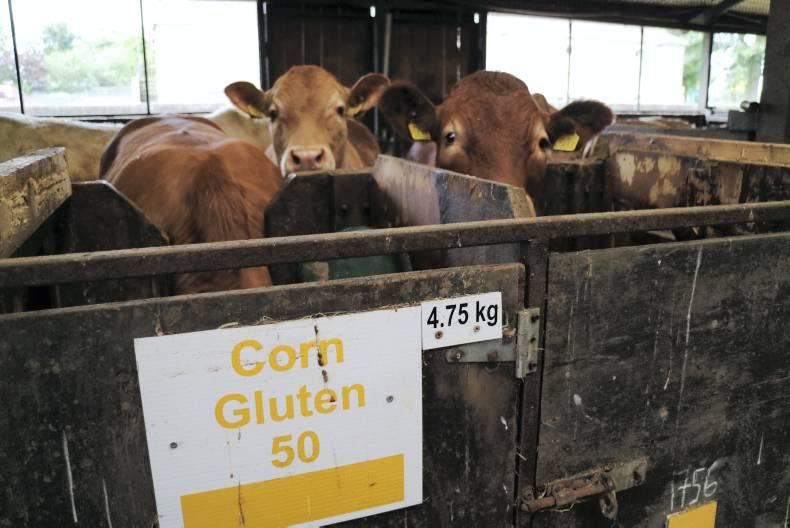Whether you are feeding export weanlings or supplementing high-yielding Holsteins, the chances are that what is in the trough contains one or more byproduct ingredients.
While cereals are the gold standard, byproduct feeds are also important when formulating livestock diets, particularly as sources of protein and fibre.
But their composition and feeding values can vary hugely.
Trials are under way at Teagasc Grange to evaluate various byproduct feeds for finishing beef bullocks.
When evaluating feeds worldwide, barley and soyabean meal are typically used as the standards. Similarly in the Grange study, the control is a barley/soyabean based concentrate (86% rolled barley, 6% soyabean meal).
There are eight diets in total:
Barley control (86%).Oats (substituting all of barley).40% citrus pulp; 46% barley.80% citrus; 6% barley.Maize distillers 80%.Wheat distillers 80%.Corn gluten 25%, 50% and 75%.Cattle are individually fed using a Calan gate system. Each animal is trained to feed from a single space that only they can access via a transponder around their necks.
All animals receive 4kg dry matter of concentrate daily, split in two feeds, and 68% DMD grass silage to appetite. The target is for a liveweight gain of 1kg daily.
Dr Mark McGee is overseeing the study, while MSc student MJ Kelly is carrying out the work on the ground.
“We’re two months in and so far there are no big differences between the diets in terms of weight gain. We’ll slaughter after 120 days and take extensive measurements from the carcase. These combined with fortnightly weights and feed intake data will enable us to paint the complete picture and rank diets accordingly,” MJ said.
Read more
Teagasc event shows route to profitable beef production
Minor differences found in Teagasc Grange maternal herd statistics
What is the nutritional value of your ration? Find out with our calculator
Whether you are feeding export weanlings or supplementing high-yielding Holsteins, the chances are that what is in the trough contains one or more byproduct ingredients.
While cereals are the gold standard, byproduct feeds are also important when formulating livestock diets, particularly as sources of protein and fibre.
But their composition and feeding values can vary hugely.
Trials are under way at Teagasc Grange to evaluate various byproduct feeds for finishing beef bullocks.
When evaluating feeds worldwide, barley and soyabean meal are typically used as the standards. Similarly in the Grange study, the control is a barley/soyabean based concentrate (86% rolled barley, 6% soyabean meal).
There are eight diets in total:
Barley control (86%).Oats (substituting all of barley).40% citrus pulp; 46% barley.80% citrus; 6% barley.Maize distillers 80%.Wheat distillers 80%.Corn gluten 25%, 50% and 75%.Cattle are individually fed using a Calan gate system. Each animal is trained to feed from a single space that only they can access via a transponder around their necks.
All animals receive 4kg dry matter of concentrate daily, split in two feeds, and 68% DMD grass silage to appetite. The target is for a liveweight gain of 1kg daily.
Dr Mark McGee is overseeing the study, while MSc student MJ Kelly is carrying out the work on the ground.
“We’re two months in and so far there are no big differences between the diets in terms of weight gain. We’ll slaughter after 120 days and take extensive measurements from the carcase. These combined with fortnightly weights and feed intake data will enable us to paint the complete picture and rank diets accordingly,” MJ said.
Read more
Teagasc event shows route to profitable beef production
Minor differences found in Teagasc Grange maternal herd statistics
What is the nutritional value of your ration? Find out with our calculator






 This is a subscriber-only article
This is a subscriber-only article






SHARING OPTIONS: